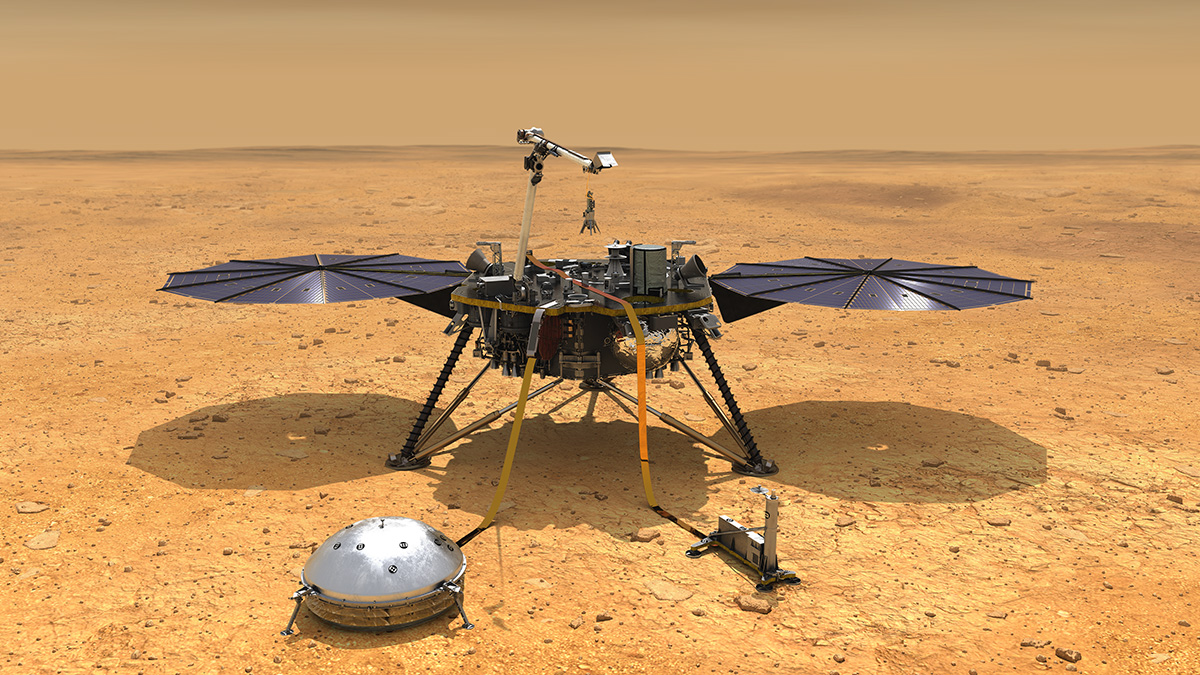Source: Journal of Geophysical Research: Planets
A planet’s geologic history is locked up in its crust, but a fundamental challenge in planetary science is deducing the subsurface composition and structure of other worlds. In studying Mars, efforts to infer the thickness and composition of the planet’s crust have combined available spacecraft data with reasonable geologic assumptions. These efforts have yielded a wide range of estimates. In recent years, however, a critical new source of data has emerged: NASA’s InSight lander.
Since 2018, InSight has provided the first meaningful measurements of seismic waves on the Red Planet. By analyzing these observations, recent work has deduced the presence of several significant crustal layers beneath the lander. However, because InSight is the only seismic station on Mars, its results are particular to its location in the planet’s northern lowlands.
Wieczorek et al. work to overcome this limitation by combining the seismic observations with gravity and topography data obtained by previous missions. The authors constructed three possible models for Martian crust: The first is of a spatially uniform composition, the second includes a near-surface low-density layer, and the third uses different compositions and density for northern lowlands and southern highlands. Each model also accounts for the low-density ice caps at the north and south poles. Then—as in past work—these models are fit to the best available gravimetric data, considering the visible surface topography.
The structure inferred by InSight’s seismic observations forms a new, more specific constraint. When considering the three different models, the average crustal thickness is estimated to be between 30 and 72 kilometers. In addition, the implied density of 2,850–3,100 kilograms per cubic meter is lower than that of most rocks studied by the rovers, and of most Martian meteorites.
On the basis of this density estimate, the authors conclude that most Martian crust is left over from the planet’s creation, having formed as the planet’s differentiated surface cooled. While there remains some ambiguity in the overall structure, the placement of a second seismometer far from the location of InSight could provide some answers, according to the authors. (Journal of Geophysical Research: Planets, https://doi.org/10.1029/2022JE007298, 2022)
—Morgan Rehnberg, Science Writer

